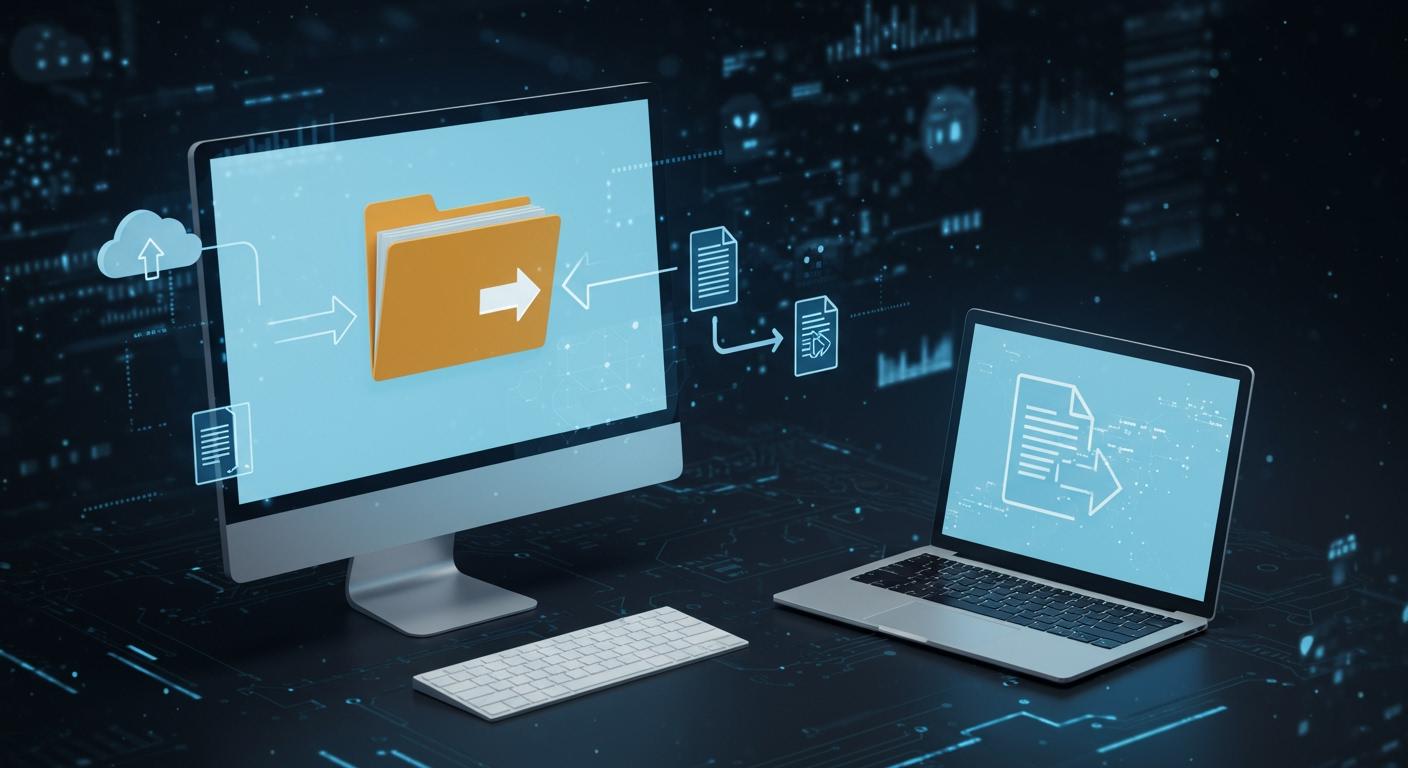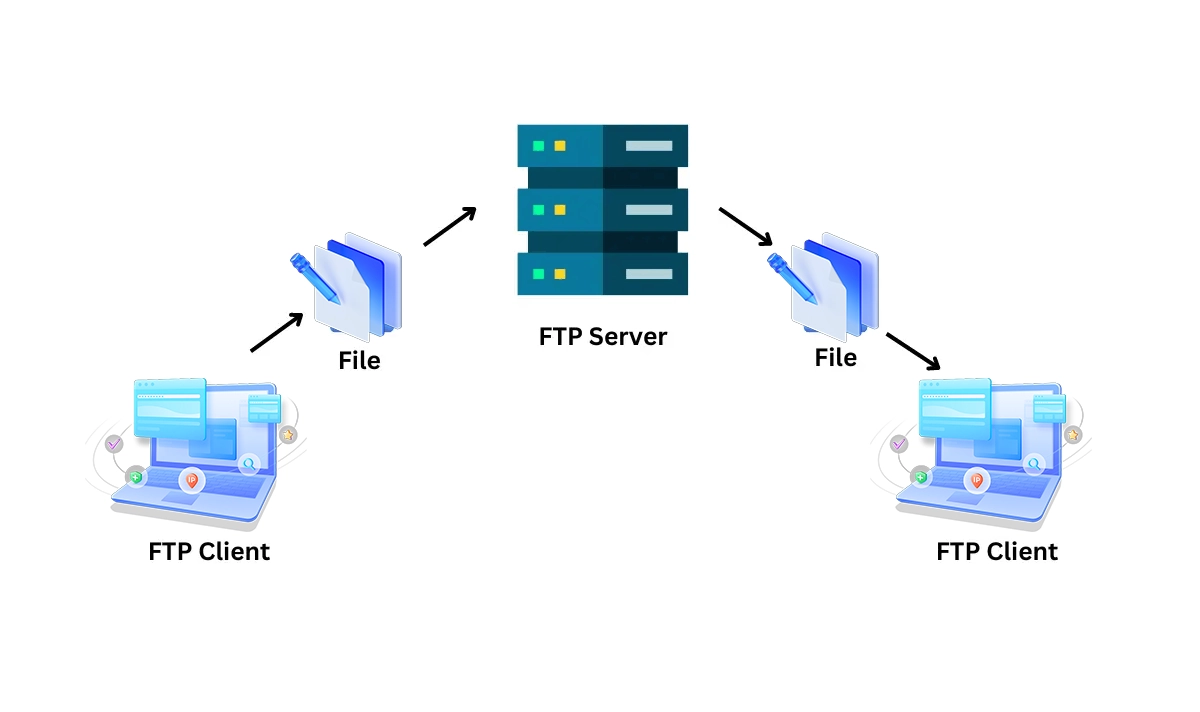
You use File Transfer Protocol (FTP) to move files between computers. It works over a network. FTP lets you upload or download files fast. This makes sharing files easy in many places. When you connect to an FTP server, you can send data. You can also get data from it. File transfer protocol works with many file types. These include documents and images. People use FTP for sharing files because it is simple. It gives an easy way to move data. File transfer protocol is still used today. This is true even with new technology. Learning about FTP helps you see how file sharing worked. It also shows why it is still important. File transfer protocol is the base for many systems. These systems send and receive information.
📑 Key Takeaways
FTP lets you move files between computers on a network. It works with many file types, so it is good for home and work.
You need an FTP client and server to use FTP. The client helps you upload or download files. The server keeps the files you want to share.
FTP has two modes: active and passive. Use passive mode if your firewall blocks connections. This can fix problems with file transfers.
FTP is easy and fast, but it is not very secure. Do not use it for private files. Try SFTP or FTPS for better safety.
You can make your own FTP server at home or use one that is already set up. This is helpful for sharing big files or saving important data.
📑 A Brief History: What is File Transfer Protocol (FTP)?
Developed in the early 1970s, FTP is a standard network protocol used for transferring computer files between a client and a server on a TCP/IP-based network, such as the internet. It operates on a client-server model: you use an FTP client (like FileZilla or Cyberduck) to connect to an FTP server where the files are hosted.
The primary goal of FTP was to promote reliable and efficient data transfer, encouraging the indirect use of remote computers. It separates control commands (like "login" or "delete") and data transfer into two separate connections, a design that was revolutionary for its time.
📑 How Does FTP Work? The Two-Channel Dance
To grasp FTP's strengths and limitations, you must understand its two-channel communication process:
Command Channel (Port 21): This is the communication line where your FTP client sends commands and receives responses from the server. For example, when you request to list directory contents, that instruction travels through the command channel.
Data Channel (Port 20): Once a command like "get" or "put" is issued, the actual file content is transferred over a separate data channel.
This separation is elegant but also introduces complexity, especially when dealing with firewalls.

📑 The Pros and Cons: Why FTP is Both Loved and Loathed
Despite its age, FTP is still in use today, and for good reason. However, it carries significant baggage in our security-conscious era.
Pros ✅ | Cons ❌ |
|---|---|
Simplicity & Universality: Easy to set up and supported on virtually all platforms. | Lack of Security: Transmits all data (including passwords) in plain text, making it highly vulnerable to eavesdropping. |
Efficiency with Large Files: Can be more efficient for transferring very large files compared to some HTTP-based methods. | Firewall Incompatibility: The two-port model often clashes with firewalls and NATs, requiring "passive mode" workarounds. |
Automation Capabilities: Easily scripted for automated batch file transfers. | No Built-in Integrity Checks: Doesn't inherently verify that files were transferred without corruption. |
Wide Client Support: A vast array of free and paid FTP clients are available. | Outdated for Modern Needs: Lacks the features expected today, such as integrated compression or modern authentication. |
📑 Beyond Basic FTP: Embracing Secure File Transfer Protocols
The critical security flaws of standard FTP led to the development of encrypted successors. When researching secure FTP alternatives for business, you'll likely encounter these two key protocols:
FTPS (FTP Secure): This is essentially FTP layered over the SSL/TLS cryptographic protocol, the same technology that secures HTTPS websites. It provides a way to encrypt both the command and data channels.
SFTP (SSH File Transfer Protocol): Often confused with FTPS, SFTP is a completely different protocol that runs over a secure SSH (Secure Shell) connection. It's more firewall-friendly as it uses only a single port (port 22) for all communication.
For any modern business, using plain FTP is a significant risk. Migrating to FTPS or SFTP is a non-negotiable step for protecting sensitive data. A robust solution like LINK-PP can streamline this transition, offering managed file transfer services that ensure security without sacrificing performance.
📑 Spotlight: The Unsung Hero - Optical Modules in Data Transfer
When we talk about protocols, we're discussing the rules of communication. But what about the physical highway that data travels on? This is where optical modules come into play, especially in data centers and high-capacity networks where FTP and other transfer protocols operate at scale.
An optical module, or transceiver, is a hardware component that converts electrical signals from a network device into optical signals for transmission over fiber optic cables, and vice-versa. They are the workhorses that enable blisteringly fast, reliable, and long-distance data transfer—the very foundation that makes efficient large-scale FTP transfers possible.
Key considerations when choosing an optical module include:
Form Factor: (e.g., SFP, SFP+, QSFP28)
Data Rate: (e.g., 1G, 10G, 100G)
Transmission Distance: (e.g., Short-range, Long-range)
Wavelength: Determines the channel and capacity.
For organizations relying on high-speed data transfer protocols, using reliable hardware is paramount. LINK-PP, a trusted name in network hardware, offers a range of high-performance, compatible optical modules. For instance, the LINK-PP QSFP-100G-LR4 is a top-tier solution for 100G connectivity, perfect for ensuring that your backend infrastructure can handle massive data transfers with minimal latency and maximum reliability. When optimizing your entire data transfer pipeline, don't overlook the critical role of your physical hardware.
📑 Conclusion: FTP's Legacy and The Path Forward
File Transfer Protocol (FTP) laid the groundwork for the digital file sharing we rely on today. Its simplicity and effectiveness for non-sensitive tasks keep it relevant. However, for any professional or business application, its lack of security makes it obsolete.
The path forward lies in adopting secure, modern protocols like SFTP and FTPS, and ensuring your underlying hardware infrastructure is up to the task. By combining robust software protocols with high-quality hardware from providers like LINK-PP, you can build a data transfer ecosystem that is not only fast and efficient but also secure and reliable.
📑 FAQ
What is the main purpose of FTP?
You use FTP to move files between computers on a network. FTP helps you upload or download documents, images, or software. Many people use FTP to share large files quickly and easily.
What do you need to connect to an FTP server?
You need an FTP client, the server address, a username, and a password. Some servers allow anonymous access, but most require login details for security.
What types of files can you transfer with FTP?
You can transfer almost any file type with FTP. This includes text documents, images, videos, and software programs. FTP does not limit the kind of files you send or receive.
What makes FTP different from SFTP?
FTP does not use encryption, so your data travels in plain text. SFTP uses encryption to keep your files and login details safe. You should use SFTP for private or sensitive files.


